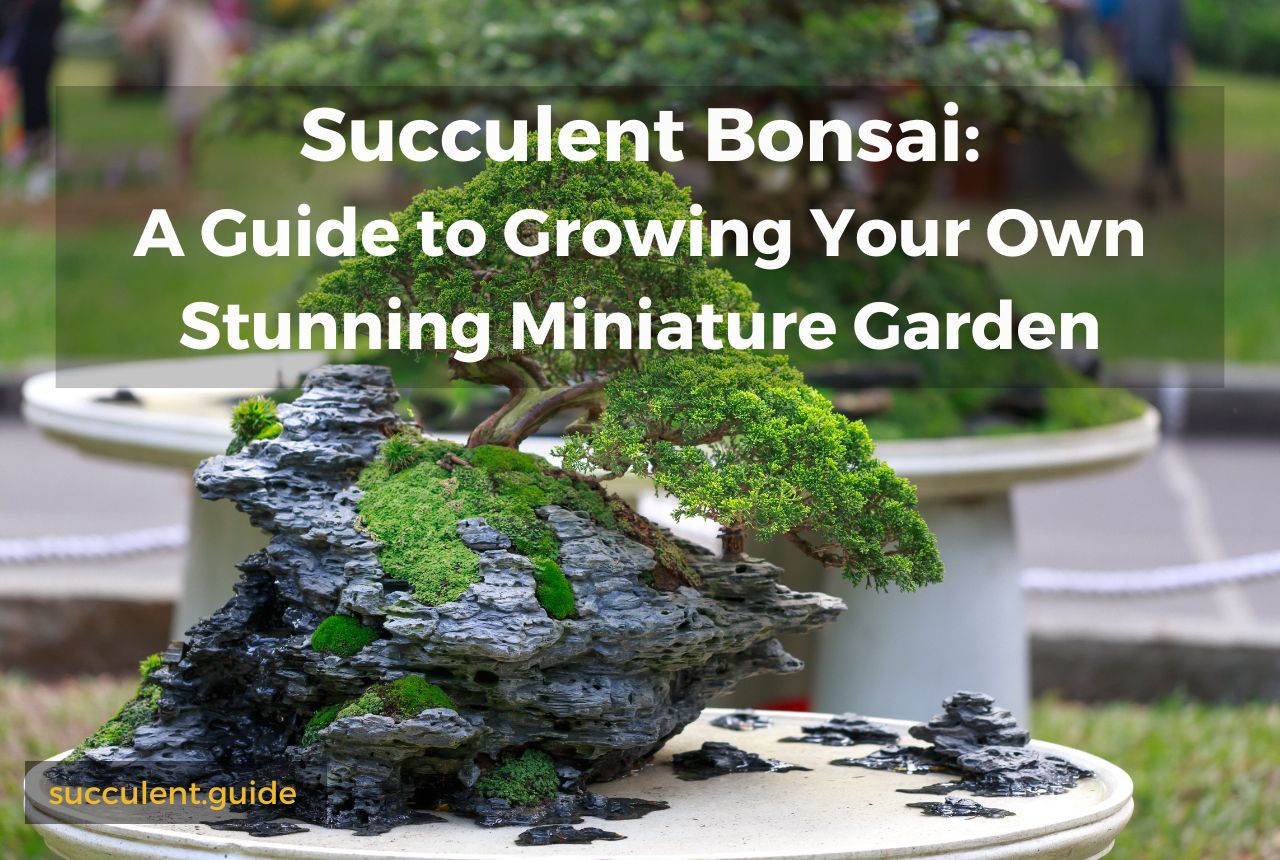Succulent plants have soared in popularity within the gardening realm, owing to their captivating shapes and alluring textures. A succulent bonsai represents a fusion of the elegant art of bonsai and the distinct features of succulent plants, culminating in a remarkable living masterpiece.
In this article, we will be discussing some of the most popular succulent bonsai species including Adenium Arabicum, Adenium Obesum, Aeonium Sunburst Crest, Aeonium ‘Irish Bouquet’, Agave attenuata, Crassula ovata ‘Gollum’, Crassula sarcocaulis, Monanthes Muralis, Othonna, and Trichodiadema Bulbosum.
What is Succulent Bonsai?
Succulent bonsai, often referred to as “bonsai succulents,” represent an exquisite fusion of the traditional art form of bonsai and the low-maintenance characteristics of succulent plants. Bonsai, originating from Japan, entails nurturing diminutive trees in containers to achieve visually stunning shapes.
Cultivating succulent bonsai entails fostering select succulent varieties in shallow containers filled with well-draining soil, and skillfully sculpting them through mindful pruning and wiring to emulate miniature trees or plants. Striking a harmonious balance between light, water, and nutrients is paramount, allowing the plant to grow gradually while preserving its petite stature.
Succulent bonsai cultivation offers a gratifying pastime for those who appreciate the allure of succulents and the art of bonsai. This blend ultimately enables the creation of extraordinary and attention-grabbing displays that infuse a hint of nature and artistic flair to any indoor or outdoor setting.
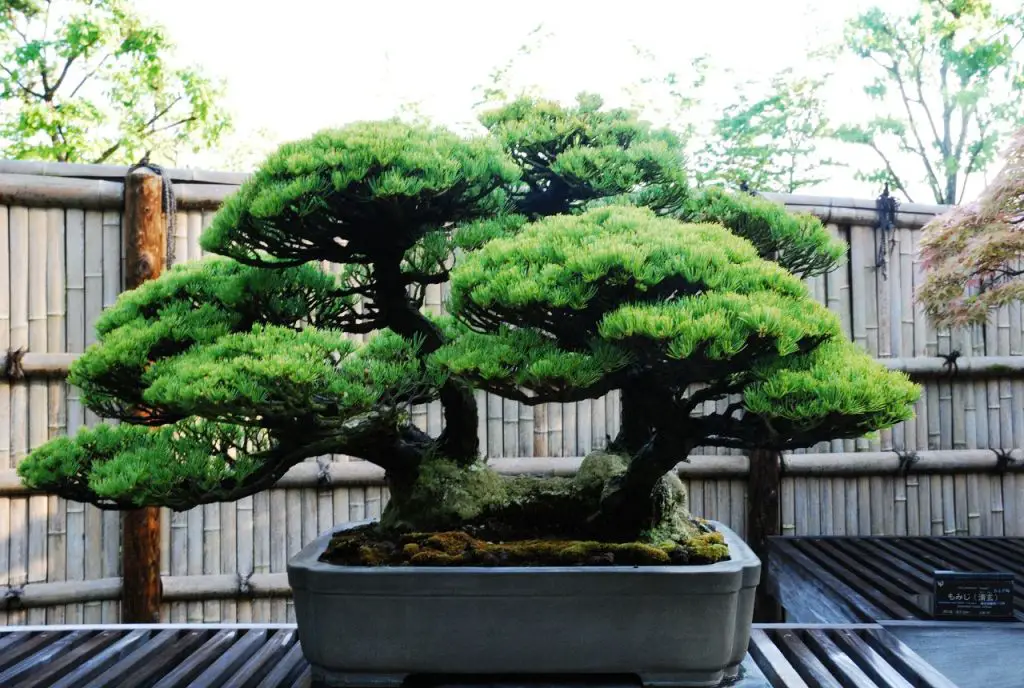
How To Choose The Right Succulent For Bonsai
Succulents are a popular choice for bonsai because of their unique shapes and textures. However, not every succulent is suitable for this technique, so it’s important to choose the right one. Here are some tips to help you choose the right succulent for bonsai.
Size
The size of the bonsai cactus is an important factor to ensure its health and suitability for the space. Larger bonsai succulents can accent a larger space or garden.
Shapes
The shape of the bonsai cactus is an important factor in creating the overall beauty of the tree. There are different types of shapes such as wooden or quilted bodies, and each requires different poses. If you’re just starting out, it’s a good idea to choose popular branches like columns, twists, or fans.
Life stage
When choosing bonsai succulents, you should choose long-lived, easy-to-care and suitable plants for your living conditions. because it affects the tree’s ability to grow and form the best way for many years. Some types of bonsai cactus can live for decades, while others only live for 5 to 10 years.
Cost
Usually, small trees are cheaper than larger trees. In addition, some unique or rare species of bonsai cactus will cost more than other popular species.
If you want to save money when buying a tree, you should look for succulent bonsai trees grown in your home garden or buy from local flower markets.
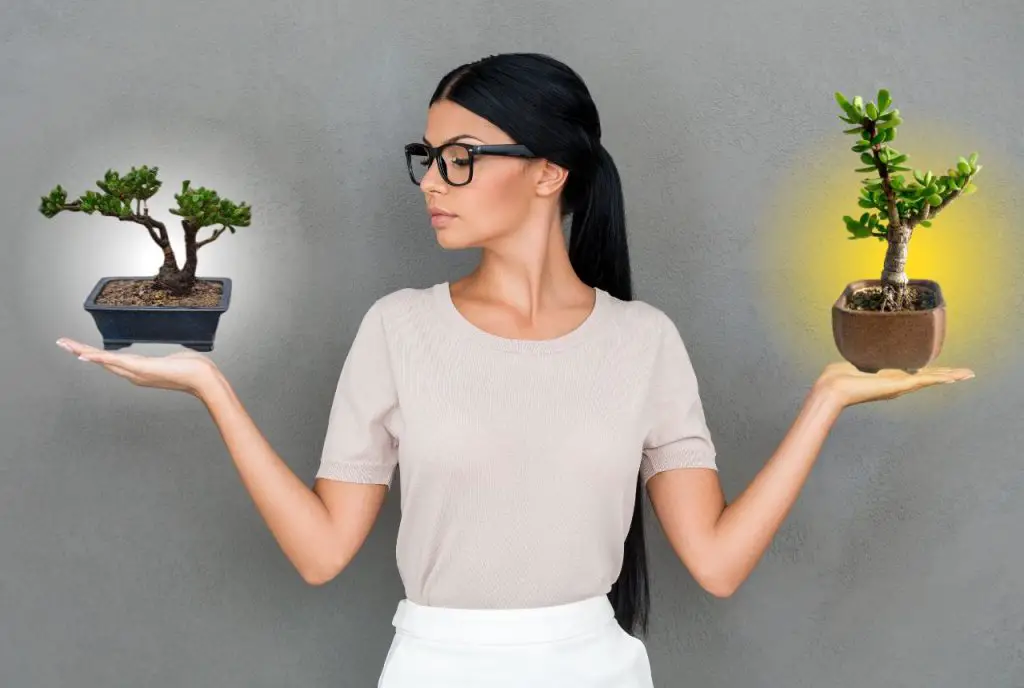
Best Succulent Bonsai for Miniature Garden
There are many succulent species that can be used for bonsai, but some are more suited for this technique than others. Here are some of the best succulent species for bonsai, along with their specific characteristics:
Adenium
Adenium swazicum, Adenium obesum, and Adenium arabicum are characterized by their ability to thrive in dry conditions and their unique appearance.
Adenium swazicum is a plant indigenous to Africa, characterized by its low, thick branches, narrow leaves, and bright pink or red flowers. Similarly, Adenium obesum is originally from Northeast Africa and the Arabian Peninsula, featuring a round stem, oval-shaped leaves, and brown fruit in a cross shape. This plant also produces vividly colored flowers that range from red and pink to white.
Adenium arabicum, on the other hand, has a strong gray bark, visible roots, bulbous leaves, and bright red or pink flowers, making it ideal for bonsai cultivation in the Arab region.
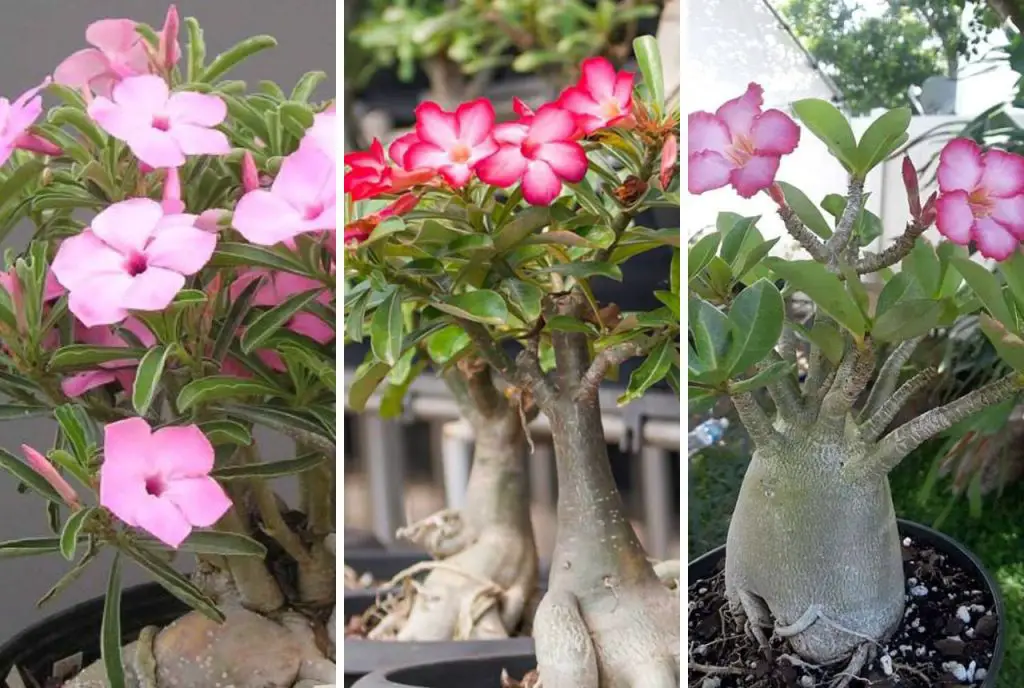
Aeonium
Aeonium is a very popular succulent in bonsai. In particular, Aeonium arboreum and Aeonium haworthii are considered to be the two most common and easy to grow among Aeonium species.
This plants can be grown into beautiful small bonsai trees for indoor decoration with a height of only 4-6 inches. The color of the leaves is also very diverse, from green to purple or red-yellow, bringing brightness and interest to the decoration of living spaces.
- Aeonium Haworthii
- Aeonium Glutinosum
- Aeonium canariense
- Aeonium Arboreum Atropurpureum
- Aeonium arboreum ‘Zwartkop’
- Aeonium ‘Arboreum’
- Aeonium ‘Mardi Gras’
- Aeonium ‘Irish Bouquet’
- Aeonium Silk Pinwheel
- Aeonium Sedifolium
- Aeonium Leucoblepharum
- Aeonium Sunburst Crest
Crassula
Crassula is a popular succulent and suitable for succulent ornamental plants. The properties of this tree include strong branches, thick foliage and uniform branches, which also makes it easy for Crassula to adjust its shape and size to suit.
- Crassula arborescens undulatifolia
- Crassula ovata
- Crassula ovata ‘Tricolor’
- Crassula ovata ‘Gollum’
- Crassula ovata ‘Hobbit’
- Crassula ovata ‘Hummel’s Sunset’
- Crassula Ovata Crosbys Compact
- Crassula Sarcocaulis (bonsai crassula)
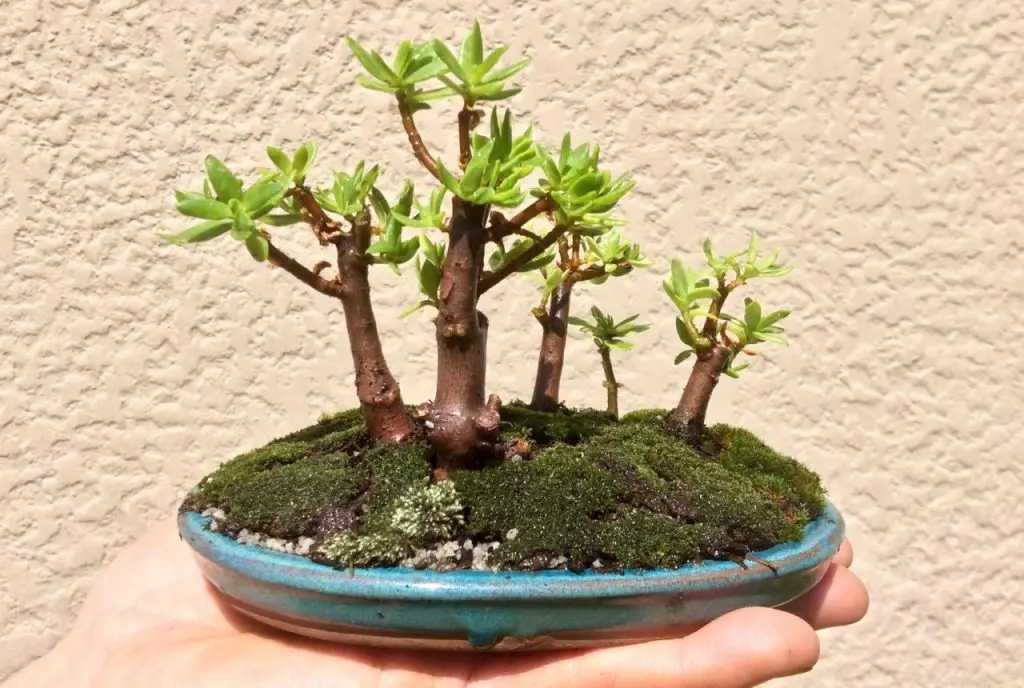
Portulacaria
Portulacaria Afra, also known as Elephant Bush, is a plant native to South Africa. With a maximum height of about 2 meters.
The species Portulacaria Armiana is also an ornamental plant. the Armiana tree has sky-blue leaves and elongated branches that create a beautiful shape when pruned.
Othonna
Othonna Cacalioides, also known as Little Pickles,. It will produce a colorful yellow cough on leaf buds in spring and summer. With a height of only about 30cm.
Othonna Arbuscula, also known as Ruby Necklace, is a beautiful ornamental plant, known for its string of vibrant red-green leaves.
It will produce colorful yellow flowers in the summer. The plant is small and easy to care for, making it a popular choice for beginners in bonsai care.
Trichodiadema
Trichodiadema bulbosum iproduces stunning pinkish-lavender blooms in late summer.
The small leaves that are attached to the stem are also easy to manage and often have an almost round-like appearance.
Tylecodon
Tylecodon Grandiflorus is a South African herbaceous plant that is very popular among bonsai enthusiasts.
However, this tree was not previously selected for bonsai due to its soft root charging structure. However, with methods and techniques to remove part of the root and replace it with soil and bonsai material, Tylecodon Grandiflorus has become a unique and interesting choice for bonsai lovers.
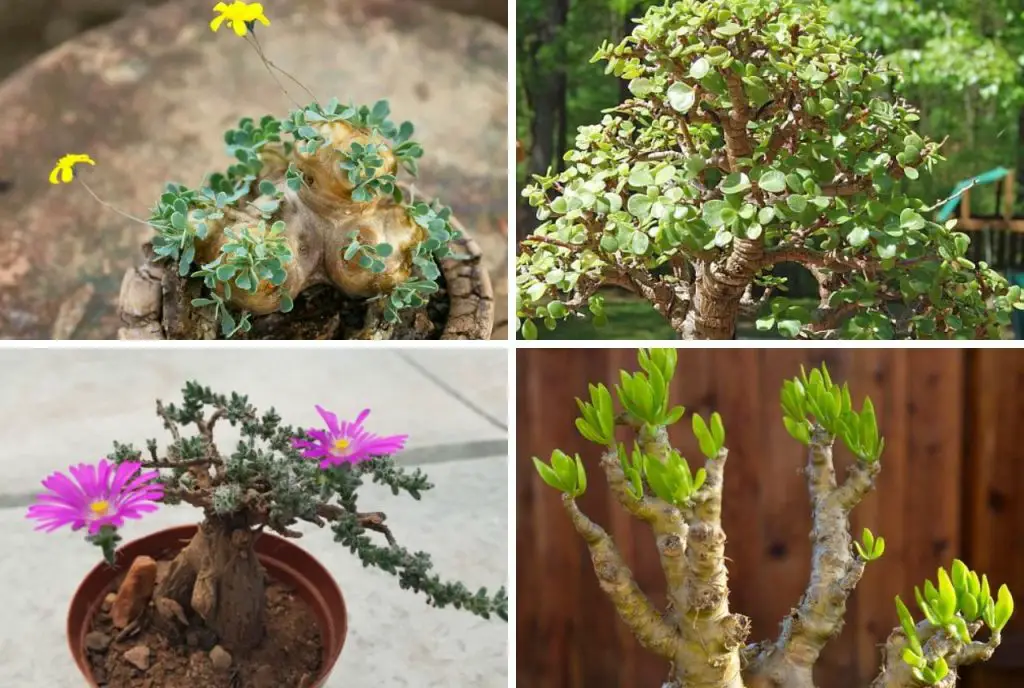
How to Grow and Care for Succulent Bonsai
Growing and caring for a succulent bonsai garden requires some basic knowledge and patience. Here are some general tips to help you get started:
Choose a container: Succulent bonsai can be grown in a range of containers, from traditional bonsai pots to repurposed teacups or shallow dishes. The container should have drainage holes and be shallow enough to accommodate the shallow roots of succulent plants.
Soil and Compost: Use a well-draining soil mix specially formulated for succulent plants to ensure optimal growth. You can also mix in some compost or other organic matter to improve soil quality.
Watering: Succulent plants only need to be watered when the soil is dry to the touch. Over-watering can lead to root rot, so it’s essential to monitor the soil moisture levels regularly.
Lighting: Succulent plants require bright, indirect sunlight to thrive. They can also tolerate some direct sunlight, but avoid exposing them to intense sunlight for extended periods, as this can damage the foliage.
Pruning and Shaping: Regular pruning and shaping are essential for creating the desired bonsai shape. Use sharp scissors or pruning shears to carefully trim the leaves and branches according to the desired shape.
In Conclusion
Growing a succulent bonsai is a great way to add natural beauty and improve air quality in your home. They come in various shapes, colors, and sizes, making them suitable for any space. With a little care and attention, they can easily become a stunning work of art that you can enjoy for years to come.
Succulent bonsai also make great gifts for friends and family who love indoor plants or gardening. Consider growing a succulent bonsai today and enjoy the beauty it brings to your life.

